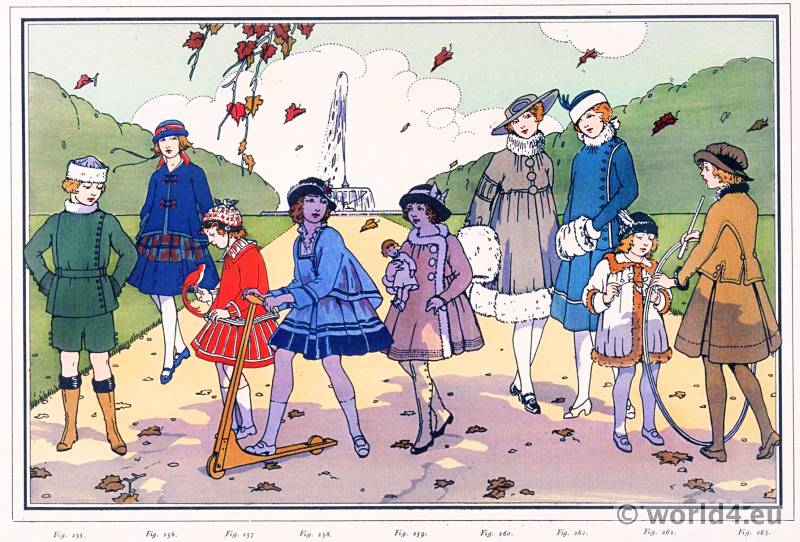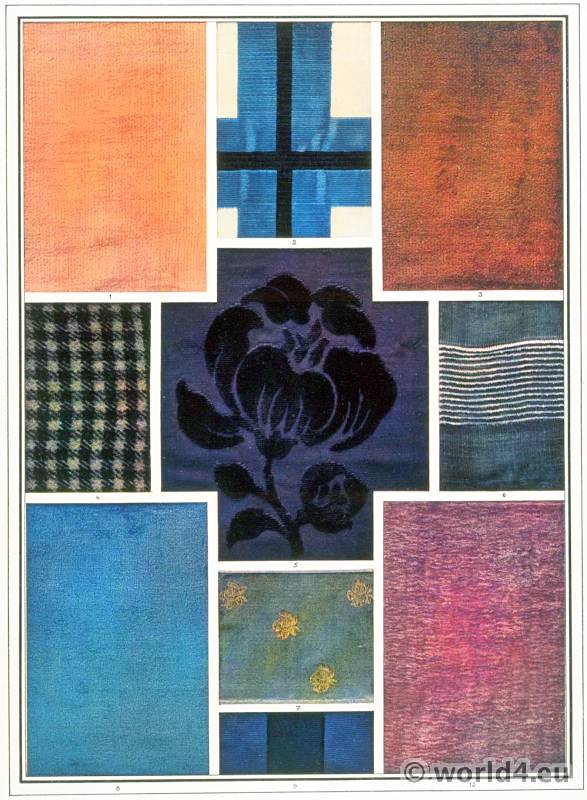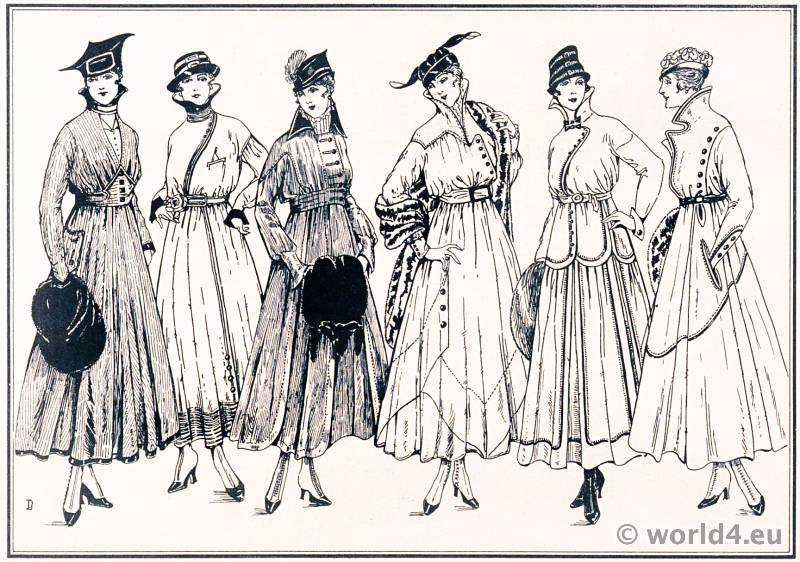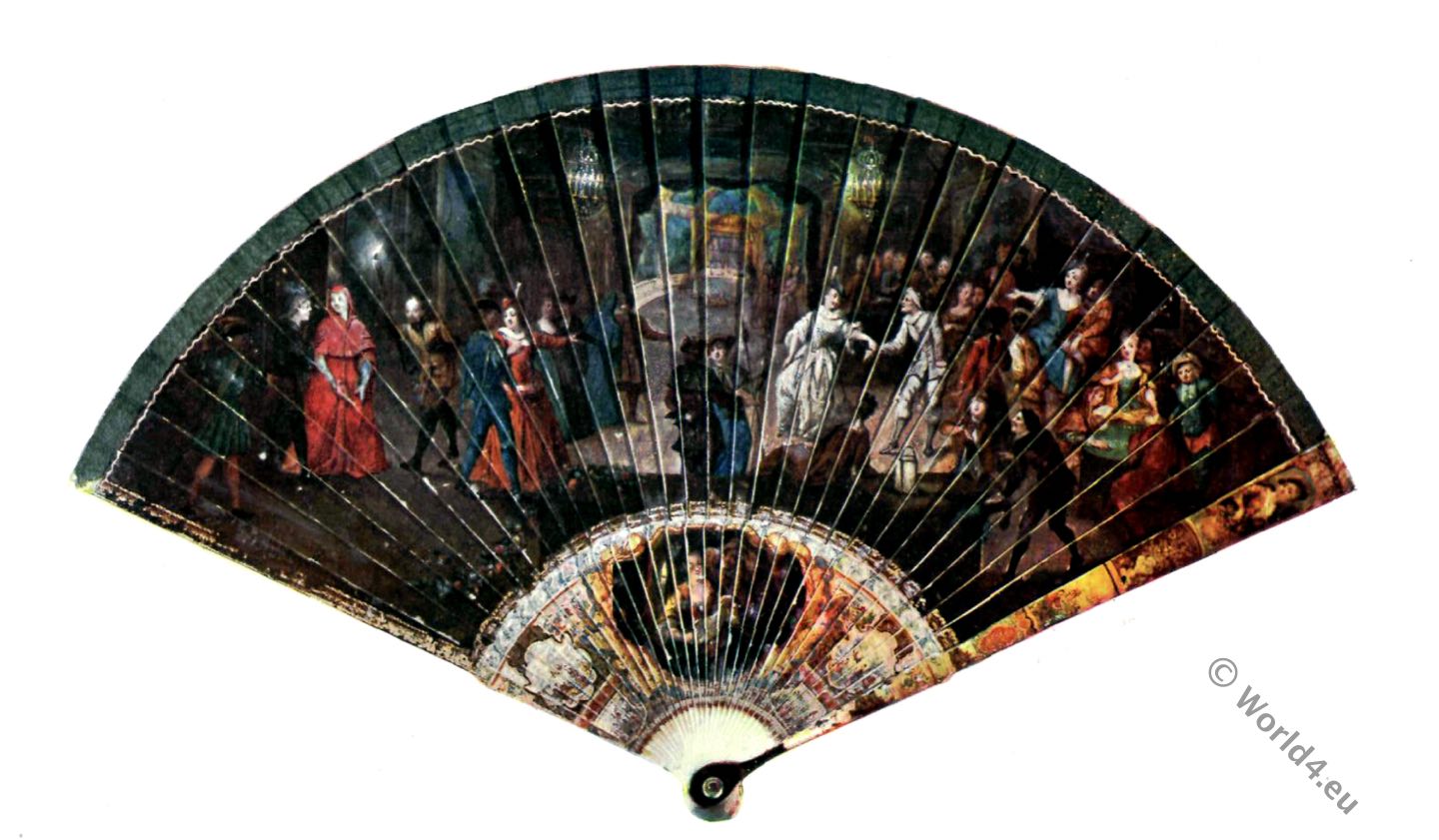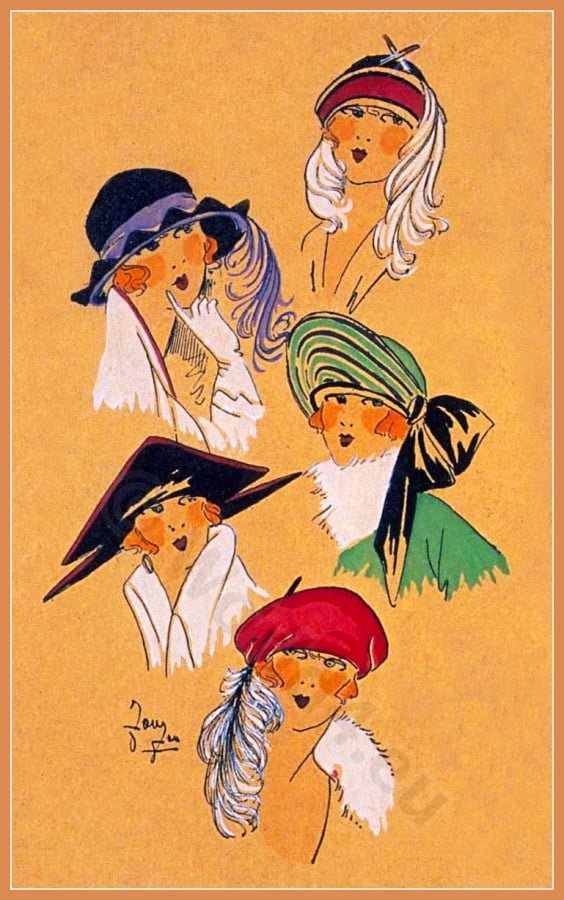Made in 1739 by the royal Ébéniste Antoine-Robert Gaudreau (c. 1680 – 1746), in documents also Gaudreaus and Gaudreaux.
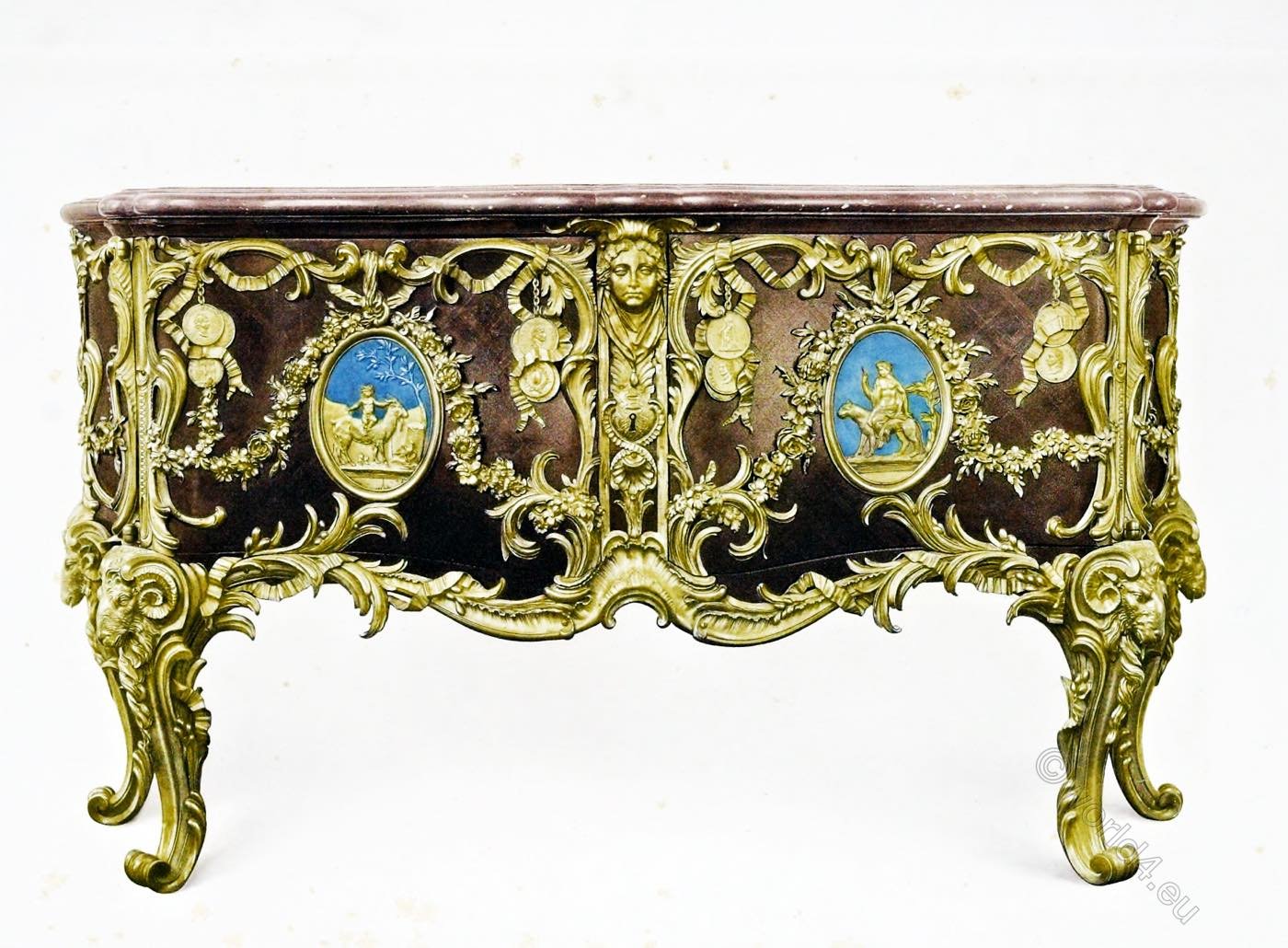
Médaillier 1739. Louis-quinze (style rocaille).
This piece of furniture, whose top is made of morello cherry marble from Italy, is built like a chest of drawers with two leaves. Medallions on a blue background, accompanied by garlands, ribbons and gilt bronze medals, decorate the curved surfaces. The assembly is supported by four bracketed legs, boldly cut, and disdainful of the straight line. The point of attachment of the legs to the body of the piece of furniture is marked by a ram’s head.
This piece of furniture, and the two corners that accompany it, come from Versailles, where they decorated the Petits appartements of Louis XV; they were to contain the rest of the gold coins from the reign of Louis XIV, which his successor wished to keep close to him. They are mentioned in the Supplement to the Inventory of Crown Furniture, drawn up in 1730.
M. de Champeaux, who studied them (Le Meuble, volume II, pages 137-139), did not recognize the hand of Cressent in the bronzes that decorate them, nor the hand of Gaudreaux, while admitting the hypothesis that the latter could have been the cabinetmaker of the furniture. M. E. Mobilier (Le Mobilier du XVII et XVIII siècle, p. 124) had the good fortune to find Louis XV’s medallion in a collection of drawings, kept in the Prints and Drawings Department of the National Library. He thought he could put the name of the sculptor René-Michel Slodtz in it. An excerpt from the Journal du Garde-Meuble de la Couronne, dated January 10, 1739, proves him right and also gives us the name of the cabinetmaker Gaudreaux, who delivered it to the Royal Garde-Meuble in 1739.
MÉDAILLIER.
Dessin des Slodty.
ÉBÉNISTERIE DE GAUDREAUX (1739).
Bibliothèque nationale. — Cabinet des médaille.
Ce meuble, dont le dessus est de marbre griotte d’Italie, est construit comme une commode à deux battants. Des médaillons sur fond bleu, accompagnés de guirlandes, de rubans et de médailles en bronze doré, décorent les surfaces bombées. L’ensemble est supporté par quatre pieds en consoles, de coupe hardie, et dédaigneux de la ligne droite. Le point d’attache des pieds au corps du meuble est marqué par une tête de bélier.
Ce meuble, et les deux encoignures qui l’accompagnent, proviennent de Versailles, où ils décoraient les Petits appartements de Louis XV; ils devaient contenir la suite des pièces en or du règne de Louis XIV, que son successeur désirait conserver près de lui. On les trouve mentionnés dans le supplément de l’inventaire des meubles de la Couronne, dressé en 1730.
M. de Champeaux, qui les étudia (Le Meuble, volume II, pages 137-139), ne reconnut pas la main de Cressent dans les bronzes qui les décorent, pas plus que la main de Gaudreaux, tout en admettant l’hypothèse que ce dernier aurait pu être l’ébéniste des meubles.
M. E. Mobilier (Le Mobilier du XVII et XVIII siècle, p. 124) eut la bonne fortune de retrouver le médaillier de Louis XV dans un recueil de dessins, conservé au département des Estampes de la Bibliothèque nationale. Il crut pouvoir y mettre le nom du dessinateur René- Michel Slodtz. Un extrait du Journal du Garde-Meuble de la Couronne, du 10 janvier 1739, lui donne raison et nous apprend de plus le nom de l’ébéniste Gaudreaux, qui le livra au Garde-meuble royal en 1739.
Source: L’exposition rétrospective de l’art décoratif français by Gaston Migeon und Emile Molinier. Paris: Goupil & cie, 1901.
Related
Discover more from World4 Costume Culture History
Subscribe to get the latest posts sent to your email.

